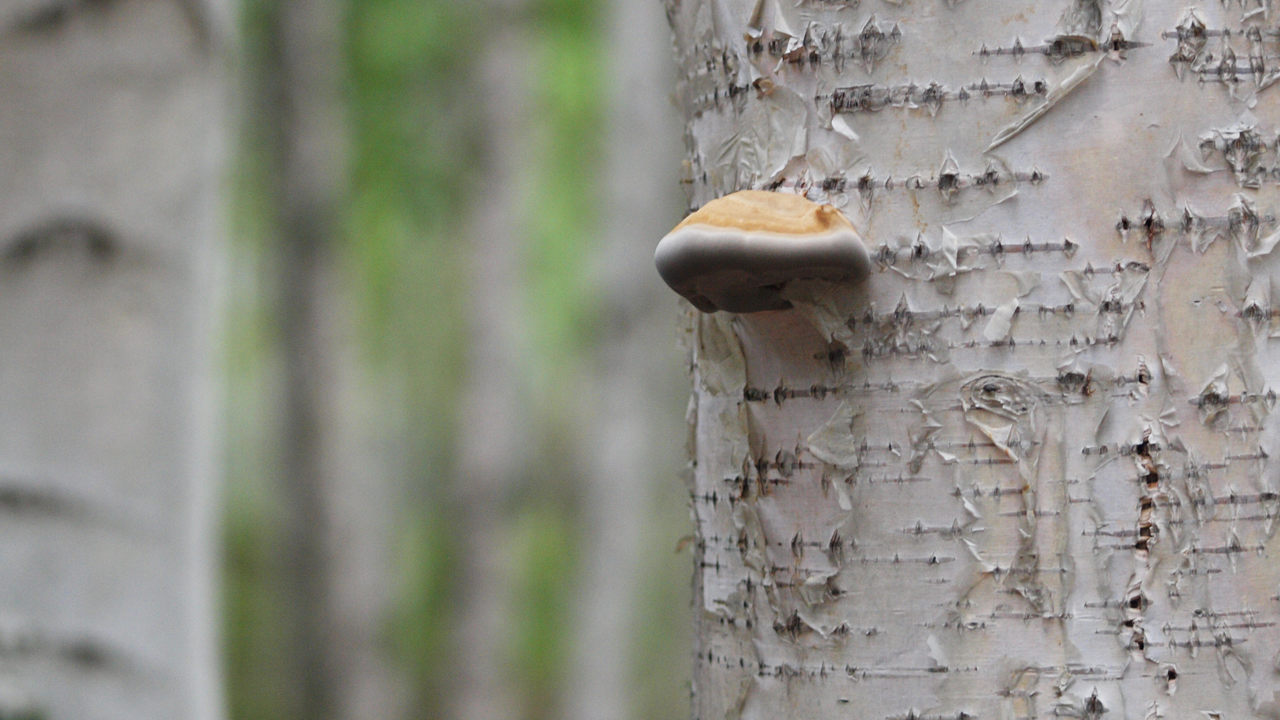
Even in a healthy grove of trees, battles rage beneath the bark as fungi duke it out for access to nutrients in wood.
But as they digest it, fungi release carbon dioxide at different rates. Given the global volume of wood, shifts in these releases could alter emissions significantly.
“Wood harbors more carbon than any other aboveground biotic pool,” says Jonathan Schilling, an associate professor in the University’s Department of Bioproducts and Biosystems Engineering. “It accounts for 80 percent of the aboveground biotic carbon, equivalent to 61 percent of the amount in the atmosphere.
“Climate modelers used to focus little attention on wood and assumed that it turned over slowly. Now they’re starting to acknowledge that rates of wood turnover are high in certain places, and that there’s a lot of uncertainty about turnover rates overall. Improving our predictions of wood carbon releases will improve climate models significantly.”
Schilling and three colleagues have begun to dispel some of that uncertainty. In a recent study with birch wood, they discovered that some environmental conditions favor wood-rotting fungi that consign relatively more carbon to the land and less to the air than archrivals that usually win the battle for woody real estate. Their work will help climate modelers predict changes in the terrestrial and atmospheric carbon pools.
The study appears in the journal Functional Ecology.
Into the Wood
In birch trees, the main rivals are “brown rot” and “white rot” fungi, which turn infected wood their namesake colors. The fungi live in both living and dead trees and compete fiercely, with white rot almost always dominating. In the process, it releases more carbon dioxide than brown rot because it degrades lignin, which accounts for 20-30 percent of birch wood’s weight.
To probe the ecology of these fungi, Schilling’s team incubated 10 pieces of birch wood, cut from healthy trees, for five months. At the time of cutting, all harbored many types of fungus, kept in check by the living trees’ defenses.
As the incubation progressed, more than half of the fungal types died off as the war for territory raged. One type repeatedly rose to dominance—surprisingly, brown rot. Moreover, those brown rots were ones that usually decay wood within buildings, not logs in forests.
Somehow, Schilling’s experimental design had coaxed an outcome, over and over again, that was not the norm in the forest. He thinks the chief factor in brown rot’s favor was feeding style.
When rotting a tree, white and brown rot fungi use different methods to feed on long stringy polymers of sugar molecules like cellulose. Says Schilling:
“Think of wood polymers as a bowl of noodles. You can slurp them up intact, as white rot does, or you can cut them into bite-sized pieces, as brown rot does.”
White rot progressively digests cell walls, degrading the lignin and releasing its carbon as carbon dioxide. The fungus then extracts polymers from end to end from inside the cell, leaving few pieces for opportunistic bacteria to pilfer.
But brown rot invades cell walls, changing their architecture only slightly. It makes a chemical end run around lignin and cuts the cellulose polymers to shreds before ingesting them. A “messy way to eat,” Schilling notes. Bacteria may find the plentiful pieces easy pickings while lignin, and its carbon, remain as residue.
Turning the Tables
Schilling hypothesizes that white rot dominates in nature because brown rot loses a lot of food to bacterial pilferage. Then when a dead tree falls onto the soil, it acquires even more bacteria. This favors the feeding style of white rot.
But his incubation chambers—like wooden buildings—contained few bacterial pilferers, and brown rot’s scattergun digestion style allowed it to “stake a lot of territory fast,” Schilling says. “White rot’s defense against pilfering may have slowed it down.”
Because trees filter out some fungi, their fungal menageries are more predictable than those of wood on the ground, Schilling says. That, plus—he hopes—his research, will make it easier to predict carbon emissions from decaying wood.
“For example, if brown rot [dominated in cold] Alaska, you’d get low carbon release,” he says. “But what if a bump in temperature not only speeds decay but shifts it toward white rot and more carbon release?
“We should be nervous about these things ‘tipping.’ These kinds of shifts are hard to imagine on a walk in the woods, but birch is a battle in plain view. It’s a wonderful snapshot of a dynamic process.”